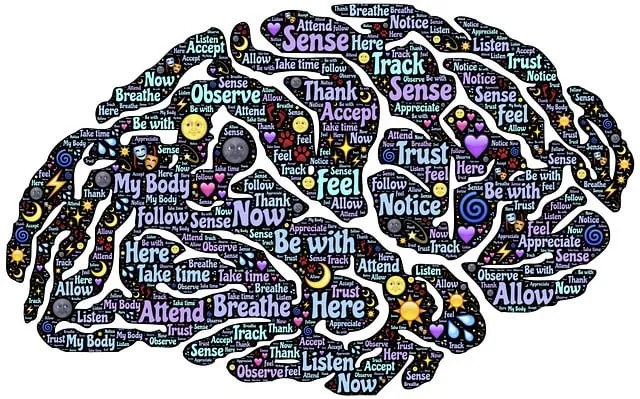Boulder Kaiser Permanente (BKP) prioritizes comprehensive mental health data collection, utilizing patient surveys, risk assessment tools, and qualitative feedback for a holistic view. Their multi-faceted approach identifies at-risk individuals, aids in risk management, and enables targeted interventions, optimizing patient outcomes and community mental health. BKP leverages advanced techniques like machine learning and artificial intelligence to analyze vast datasets, quantifying qualitative aspects such as emotional intelligence and cultural sensitivity. They employ intuitive graphs and charts for visualizing trends in mental health data, simplifying complex findings for stakeholders and facilitating informed discussions among healthcare providers.
Mental health data analysis is a powerful tool for understanding and improving well-being. This article explores advanced techniques employed by Boulder Kaiser Permanente, analyzing the vast mental health numbers collected from their patient population. We delve into the process of understanding this data, from collection to interpretation, highlighting innovative methods that reveal trends and insights. By visualizing these findings effectively, healthcare providers can make informed decisions, ultimately enhancing care delivery at Boulder Kaiser Permanente and beyond.
- Understanding Mental Health Data: Collection and Overview at Boulder Kaiser Permanente
- Advanced Analysis Techniques for Interpreting Mental Health Metrics
- Visualizing Trends: Effective Communication of Mental Health Findings
Understanding Mental Health Data: Collection and Overview at Boulder Kaiser Permanente

At Boulder Kaiser Permanente, understanding mental health data begins with a robust system for collection and overview. The healthcare provider prioritizes comprehensive data gathering, encompassing various aspects of patient mental well-being. This includes tracking key metrics such as diagnosis rates, treatment adherence, and outcomes over time. By analyzing these numbers, mental health professionals gain valuable insights into the prevalence and trends within their patient population, facilitating informed decision-making.
The facility’s approach to data collection extends beyond clinical notes and diagnostic reports. It integrates patient surveys, risk assessment tools, and qualitative feedback to paint a holistic picture of mental health in the community. This multi-faceted strategy not only aids in identifying at-risk individuals but also supports risk management planning for mental health professionals, enhancing their ability to deliver tailored interventions. Moreover, by delving into these data, Boulder Kaiser Permanente can initiate self-esteem improvement initiatives and other relevant programs aimed at optimizing patient outcomes and overall community mental health.
Advanced Analysis Techniques for Interpreting Mental Health Metrics

In the realm of mental health data analysis, advanced techniques are transforming the way we interpret critical metrics. Organizations like Boulder Kaiser Permanente are at the forefront of this evolution, leveraging sophisticated tools to gain deeper insights into patient well-being. These methods extend beyond traditional statistical analysis, incorporating cutting-edge approaches such as machine learning and artificial intelligence. By examining patterns in vast datasets, these technologies can identify subtle correlations and predict outcomes with remarkable accuracy, enhancing clinical decision-making.
For instance, emotional intelligence—a key component often overlooked in mental healthcare—can be quantified and analyzed using advanced algorithms. Similarly, cultural sensitivity in mental healthcare practice finds a quantitative voice through data mining, allowing for more personalized and effective interventions. Moreover, resilience building, a cornerstone of holistic mental health management, can be tracked and evaluated over time, providing valuable feedback loops for both patients and practitioners.
Visualizing Trends: Effective Communication of Mental Health Findings

Visualizing trends in mental health data is a powerful tool for communicating complex findings effectively. By employing intuitive graphs and charts, healthcare professionals can illuminate patterns and shifts over time, making intricate information more accessible to both colleagues and clients. This is particularly important at organizations like Boulder Kaiser Permanente, where managing a substantial mental health number necessitates clear communication strategies.
For instance, visualizing trends in patient outcomes related to resilience building or emotional healing processes can help stakeholders understand the effectiveness of interventions. Such visual representations not only simplify data interpretation but also facilitate informed discussions, enabling healthcare providers to tailor their approaches and better support clients’ journeys toward well-being.
Mental health data analysis is a powerful tool for understanding and improving patient care at Boulder Kaiser Permanente. By employing advanced techniques, such as sophisticated statistical methods and insightful visualization, healthcare professionals can interpret complex mental health metrics effectively. This allows for the identification of trends and patterns among patient populations, enabling tailored interventions and improved treatment outcomes. The Boulder Kaiser Permanente mental health numbers highlight the significance of these analytical approaches in managing and supporting the well-being of individuals within the healthcare system.






